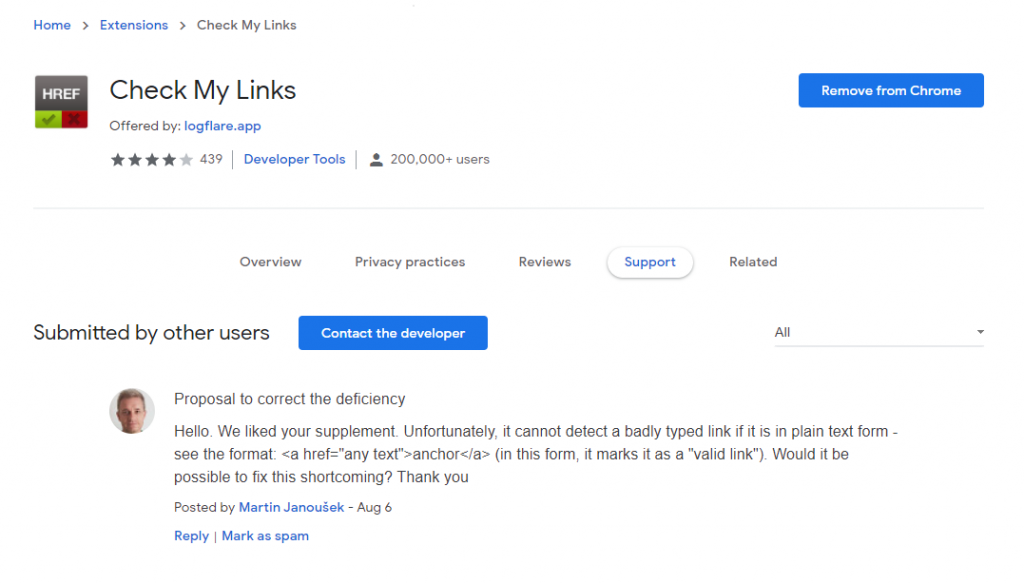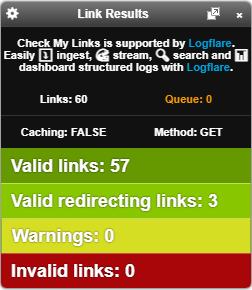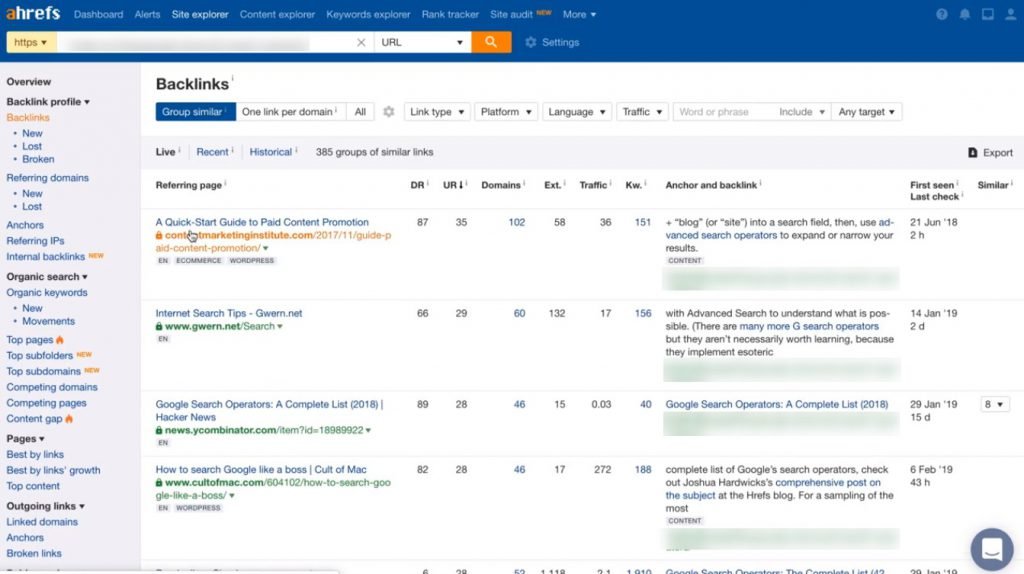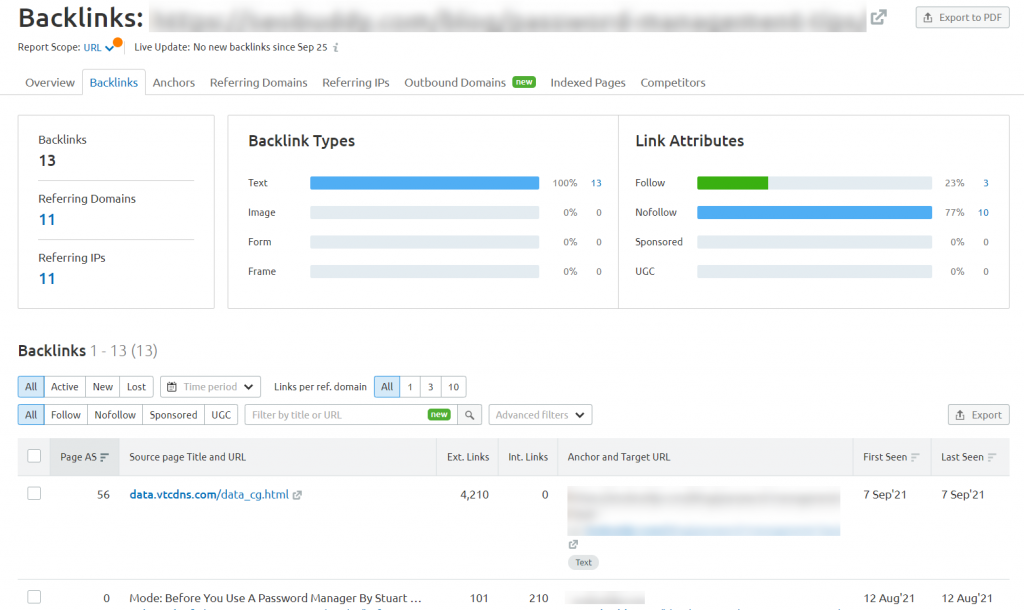Broken Link Building: What is it and How to Do It?
Broken link building is one of the common link-building techniques used by SEO experts.
Building broken links can be a tedious task that takes lots of time and effort. Many people prefer more straightforward link-building tactics like guest posting or directory citations.
But, if done right, broken link building can help you build high-quality backlinks without the need for creating any new content. While many other tactics focus on creating content specifically for building backlinks, broken link building tries to find backlink opportunities within existing content.
So, what exactly is broken link building and how can you use it to your advantage?
Keep reading to find out.

What is Broken Link Building?
In simple terms, broken link building requires you to identify broken links on relevant websites and ask the webmasters to replace them with your links.
You can find broken links to your website, your competitors’ websites, and to any other website in your niche. Irrespective of who the link was supposed to be directed to, you can reach out and get it replaced with your updated link.
Wondering what causes broken links in the first place?
Broken links could result from one of the following reasons:
- The linked site changed the URL without setting up redirects
- The target website moved or simply does not exist anymore
- The website removed the linked page, causing a 404 error
- The link itself is wrong and was always broken
Whatever the reason, a broken link building campaign can help you build backlinks quickly and effectively to improve your off-page SEO.
How to Do Broken Link Building the Right Way
The broken link building process essentially requires only two steps:
- Find broken links within relevant content in your niche
- Reach out to webmasters and get it replaced with your own links
Let’s discuss both of these in detail.
How to Find Broken Links
To start broken link building, you need to first identify broken link building opportunities on other websites in your niche.
That’s where a tool like Check My Links can help you out. This Chrome extension can help you spot broken links as you browse through different websites in your niche.

Once installed, you’ll see a small icon of the extension. When you click on it, the extension will show you all the links on that page.
It’ll categorize them into four types:
- Valid links
- Valid redirecting links
- Warnings
- Invalid links

It’ll also highlight each of these links on the page so that you can easily spot them. The links you should be interested in here are the “Invalid links”. These are the broken links on a particular page.
But how do you scale this process?
Let’s find out.
Discovering Broken Links at Scale
The process of finding broken links needs to be quick. While the tools can’t help you check multiple pages at once, they can help you check numerous links together.
There lies the opportunity to scale up the process.
You should look for pages that have numerous outbound links. These are the ones where you might possibly find broken links.
Resource pages, in particular, can be helpful here.
The reason?
They tend to have loads of outbound links. As a result, the probability of finding a broken link there is greater.
Pro Tip: If you want to skip the trouble of finding broken links, you can always use our Link Chest to your advantage and find helpful backlinking opportunities.
How to Replace Them with Your Links
Finding broken links isn’t enough. You also need to have a method in place to replace those links with links to your website.
And how exactly can you do that?
Let’s find out.
1. Create a Similar Resource
Before you reach out to webmasters to inform them about the broken links, you should first identify a resource on your website that’s similar to the one that existed on the broken link.
If you don’t already have it, you should put effort into creating one from scratch. The idea is to have a valuable alternative resource for the webmasters to link to by replacing the broken link with it.
2. Approach Webmasters
Once you’ve found a broken link on a particular website, you need to find a way to get in touch with the webmaster of that website.
You can start by scouting for their contact information.
Once you’ve found their email address, you can send them an email informing them about the broken link.
Along with it, you can let them know that you’ve created a similar resource that they can replace the broken link with.
While this method may not work with everyone, it would help you generate a few backlinks.
Do note that not everyone will reply positively to your email. Thus, you may have to continue this process for every link.
3. Find Other Websites
If a webmaster doesn’t respond to your email, you’ll have to find a new broken link and reach out to the webmaster of that website, right?
Thankfully, it doesn’t have to be that way.
There’s a way through which you can scale your broken backlink-building process.
Once you’ve found a broken link, you can head to Ahrefs or Semrush.
Ahrefs
On Ahrefs, you can head to the Site Explorer tool. There, you can add the broken link in the search bar. On doing so, the tool will bring up a list of all the broken pages that are linking to that link.

You can then conduct broken link building outreach by reaching out to the webmasters of all these websites and ask them to replace the link with yours. This can improve your chances of getting backlinks.
Semrush
On Semrush, you can head to the Backlink Analytics tool and enter the broken link there.

This will bring up all details related to the backlinks to the page, including the pages that are linking to it. You can then reach out to the webmasters of all these websites and ask them to replace the link with yours.

Now it’s time to discover the other 102 steps that will get more organic traffic flowing to your website. Get the SEO Checklist here.
Want to get a sneak peek of what it looks like?
Enter your email and get a free demo version of the SEO Checklist.
Broken Link Building Outreach Template
You may have found loads of websites to reach out to for broken link building. However, if you don’t get your email right, it’s likely that the webmasters may not reply to you at all.
To help you get your outreach email right, here’s an outreach template you can use:
Hey [Name],
[Your Name] here from [Your Organization’s Name].
I was going through your website, and, specifically, your post on [Enter the post name with a hyperlink].
It’s a splendid resource — very informative and helpful. However, while reading it, I noticed that it includes a broken link – [Enter the broken URL]. Here’s a screenshot of the broken link [Add screenshot or GIF of the broken link].
If you’d like to replace this link, I’ve put together a resource on a similar topic here – [Enter name of post and hyperlink it]. I’m sure your audience will find it helpful. 🙂
In either case, I just thought I should let you know about the broken link.
Regards,
[Your Name]
Now, there’s a chance that the webmaster may not reply to your first email. That’s why it’s important to follow up with them too. We’ve got you covered with the template for that as well.
Hey [Name],
[Your Name] here from [Your Organization’s Name], again.
I wanted to drop in to check if you had a chance to go through my previous email. I can totally understand if you haven’t been able to do so.
I was reading your post on [Enter the post name with a hyperlink] and found a broken link on it ([Enter the broken URL]). I’ve put together a similar resource and maybe you might want to replace it? 🙂
In either case, I thought I should let you know!
Regards,
[Your Name]
FAQ
1. What is a broken link in SEO?
A broken link, in simple terms, is a link that doesn’t lead anywhere. There could be several reasons for this such as a resource being moved to another location. Clicking on a broken link often shows an error and these links are also called dead links.
2. What are the impacts of broken links?
Broken links can affect your SEO and user experience. When a user clicks on a broken link, it leads them to a dead-end, which, in turn, can spoil their experience. The same also applies to search engine robots and this can negatively affect your rankings.
3. Does broken link building work?
Yes, broken link building is a highly effective method of building backlinks for your website. It involves finding broken links and asking webmasters to replace those with your links.
4. How do I get results from broken link building?
To get results from broken link building, follow these steps:
- Find broken links using a link explorer
- Identify or create content that’s similar to what existed on the broken link
- Reach out to the webmasters and request them to replace the links
5. How do you prevent broken links?
Here are some ways through which you can prevent broken links:
- Use short and simple URLs
- Regularly check your links
- Redirect your links well
- Use a link checker to verify links
Final Thoughts
Broken link building is a highly effective way of building backlinks for your website. All you have to do is find broken links, create content that can serve as a replacement for those links, and then approach the webmasters to replace them.
Doing so for multiple websites can help you quickly generate numerous backlinks for your website. And if that doesn’t suffice, you can always check out our SEO Checklist to understand how to give a special boost to your link-building efforts.




Hello Romain, thanks for sharing your informative post about broken links building. Helpful!
Your article was excellent. It was easy to read and very informative. Keep writing such great content, and I would love to see more of your work on my blog as well.
I thoroughly enjoyed reading your blog post. The content was well researched, and your writing style is engaging. I would love to have you contribute to my blog as well, so please keep up the fantastic work.
Thank you for sharing this top-notch article on broken link building! It’s an insightful and effective strategy that I’ve personally found valuable for improving SEO and building quality backlinks. The step-by-step guide and expert tips provided here make it easier to implement this technique in our digital marketing efforts. Kudos to the author for such a comprehensive and informative piece! Looking forward to more top-quality content like this.